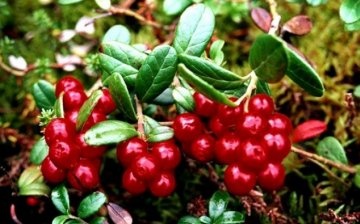Lingonberry cultivation. Natural antibiotic in the garden
Lingonberry is a valuable medicinal plant. In nature, it lives in a coniferous or mixed forest, tundra, along the edges of peat bogs. Its berries and leaves perfectly help with colds, have a disinfectant, diuretic and choleretic effect, strengthen the walls of blood vessels and improve immunity. Not everyone likes to pick wild berries, many gardeners prefer to grow lingonberries on their own plot. Observing simple agricultural techniques, you can get a good harvest of valuable berries.
Before planting a plant, the soil should be prepared. Lingonberries need a light peat substrate with the addition of sand. In the absence of peat, yields will be significantly lower. The soil should be acidic, it is enough to add powdered sulfur, about 10 g per sq.m. Choose a sunny location, and don't forget to apply phosphorus, nitrogen and potash fertilizers. The easiest way is to buy seedlings. Currently, about 20 varieties are on sale, with a closed root system, which guarantees good survival. You can take rhizome cuttings from a forest plant or from neighbors in the country. But in this case, they will have to be kept in a greenhouse for a whole year until they turn into full-fledged bushes.
Cultivation of lingonberries does not require particularly careful care. It is enough to water it a couple of times a week in hot weather. The rest of the time - only weed, loosen and feed with acidic mineral fertilizers. After 7-8 years, the bushes that have lost their healthy appearance rejuvenate by cutting off the shoots in the spring before the start of sap flow. Bushes give harvest in the second year after planting, and in five years you will collect up to 10 kg of berries from only one square meter of plantings.



